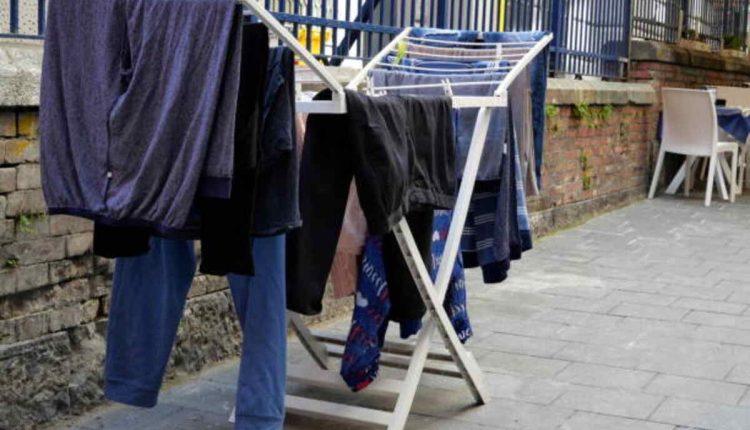Dry Wet Dress With a Drying Rack
Women of revolutionary France would immerse their muslin dresses in water for years to create the appearance that they were drenched. From John Galliano in the ’80s to Alexander McQueen’s golden shower during his runway show, this trend recurred frequently and eventually found its way onto runway shows such as McQueen’s.
Drying Rack
An inexpensive drying rack may seem unnecessary in your laundry room, but they are actually highly beneficial in saving both time and money. Clothes tumbled through a dryer can become wrinkled or misshaped; when placed on a drying rack, they remain wrinkle-free while drying faster. Plus, using one can protect delicate clothing while prolonging its life!
The ideal drying racks are sturdy, user-friendly, and compact when not in use. There are various designs to suit different spaces and needs – some fit over doors and railings while others stand alone – choose your rack accordingly and look for sturdy materials such as stainless steel or aluminum, which won’t rust as these durable materials won’t succumb to corrosion in rainy or salty air conditions and won’t be destroyed by raindrops or humidity.
A dryer rack is not only energy-saving but gentle on clothes as well. Plus, it helps dehumidify your home. However, delicate fabrics should always follow their label’s care instructions in order to prevent damage or shrinkage during drying time. Also, be sure to hang clothing apart so air circulation occurs quickly, thus speeding up the drying process.
Iron and Towel
As is well-known, the wet-look dress has recently become a hot trend and has been worn by stars like Megan Fox and FKA Twigs. The fabric technique developed by designer Di Petsa to highlight patriarchal censorship of women’s bodies is called di Petsa-ironing; to get its wet appearance, iron your wet clothes between two sheets of tissue paper or paper towel before tightly rolling them up and ironing at an appropriate heat setting until all excess water has been removed by ironing; stop at when indicated by iron and wipe off soleplate with damp cloth before subsequent use!
Ironing
Ironing wet clothing can speed up the drying process if you need them quickly, but be mindful to follow care instructions on each garment. Silk and rayon should only be ironed once completely dry as heat from an iron could thin and tear them, while wool shrinks if ironed while damp.
Ironing damp clothing to smooth out creases is another effective method. Just be sure to place a towel over the fabric so you do not accidentally burn it and absorb any moisture generated from using an iron on a damp cloth. When ironing wet fabrics, it should be set at lower temperatures and only used occasionally.
Before beginning ironing, it is a good idea to turn the garment inside out to protect its front from scorching marks as you iron out severe wrinkles. Keep the iron moving in a back-and-forth motion rather than holding it still for too long, as this can crush fibers and result in crushed fibers that may need repair later. Once ironing has been completed, hang the garment up to air dry afterward.


